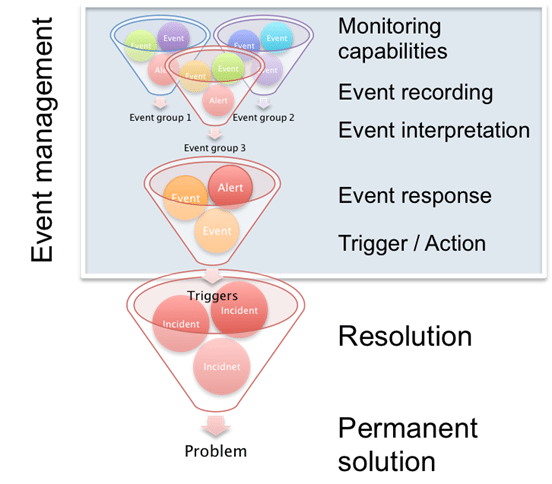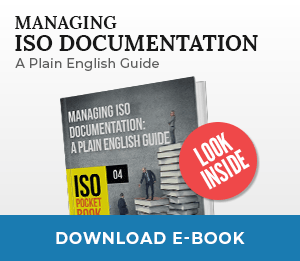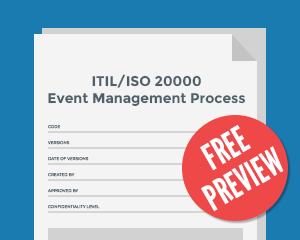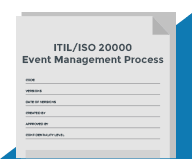
How do you find out that there is an issue with your IT infrastructure and/or services? If your answer exclusively relies on end-users reporting issues to the Service Desk, you may want to learn more about an interesting ITIL Service Operations chapter – Event Management.
An event can be defined as any detectable or discernible occurrence that has significance for the management of the IT Infrastructure (or the delivery of IT service). Event Management is responsible for the evaluation of the impact a deviation might cause to the services. Events are typically notifications created by an IT service, Configuration Item (CI), or monitoring tool.

Figure 1 – From an event to the root cause (problem)
Therefore, simply establishing monitoring capabilities doesn’t mean that you have Event Management, but there is no Event Management without effective monitoring.
There are two types of monitoring systems:
The ability to detect events, make sense of them, and determine the appropriate control action is provided by Event Management. Therefore, Event Management is often referred to as the entry point for the execution of many Service Operation processes and activities. In addition, it provides a way of comparing actual performance and behavior against design standards and Service Level Agreements.
Event Management objectives include:
Event Management can be applied to any aspect of service management that needs to be controlled and which can be automated. These include:
In some cases, Event Management’s value to the organization is generally indirect, but in most cases it directly:
Within one of the previous articles: Communication inside IT Service Management team – setup of joint vocabulary and criteria, we looked into the realm of space flight and good service management practices on the Apollo 13 flight. After the catastrophic explosion in one of the oxygen tanks in the Command module, the crew of three astronauts was moved into a lunar lander designed for two. This decision saved their lives, but at the same time it almost led to their doom; three people breathing within the lunar lander generated too much CO2 for the filters to eliminate, and they almost died of CO2 poisoning. Luckily, the rise of CO2 was recorded in time, thanks to the monitoring systems installed, and a workaround was implemented before the worst happened.
Running IT operations with effective Event Management is very similar – you can predict and prevent the worst-case scenario from happening by collecting and interpreting vital information regarding the system or service you’re responsible for.
Measurement tools are very important, as well as how you implement the process. You can check out a free preview of our Event Management process template to see how the process could be implemented.


ITIL/ISO 20000 Event Management Process
Define the elements of the Event Management process in the context of IT Service Management
ITIL/ISO 20000 Event Management Process
Define the elements of the Event Management process in the context of IT Service Management

ITIL/ISO 20000 Event Management Process
Define the elements of the Event Management process in the context of IT Service Management